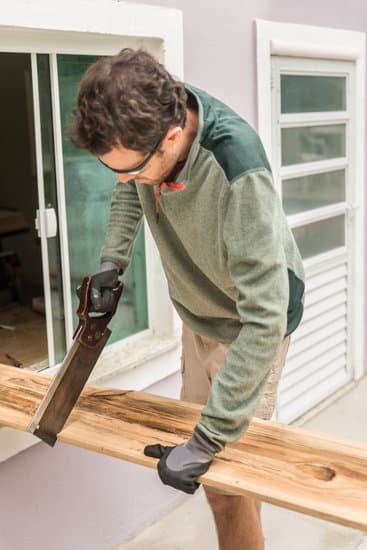Are you constantly asking yourself, “how can I improve the heat circulation in my home?” Understanding the importance of proper heat circulation is essential for maintaining a comfortable and energy-efficient living space. In this article, we will explore common issues with heat circulation in homes, assess the current HVAC system, and provide valuable tips for improving airflow and heat distribution.
Proper heat circulation is crucial for ensuring that every room in your home receives adequate warmth during the colder months. When heat is not distributed effectively, some areas may feel overly warm while others remain chilly. This imbalance can lead to discomfort and result in higher energy costs as the heating system works harder to compensate.
Identifying common issues with heat circulation in homes is the first step towards finding a solution to this problem. Whether it’s obstructed air vents, inadequate insulation, or an inefficient HVAC system, understanding these challenges will help you address them effectively. By assessing your current heating and cooling setup, you can determine the specific areas that require attention to improve overall circulation and distribution.
Identifying Common Issues With Heat Circulation in Homes
When it comes to heat circulation in homes, there are several common issues that can arise and affect the overall comfort level of your living space. Identifying these issues is crucial in order to find effective solutions and improve the heating system in your home. Some of the most common problems with heat circulation include:
1. Blocked or obstructed air vents: One of the most common issues with heat circulation is blocked or obstructed air vents. This can prevent warm air from effectively circulating throughout your home, leading to uneven heating and cold spots in certain areas.
2. Leaky ductwork: Leaky ductwork can result in a significant loss of heated air, reducing the efficiency of your HVAC system and leading to uneven heating throughout your home.
3. Poor insulation: Inadequate insulation in walls, floors, and ceilings can contribute to heat loss and make it difficult for your home to retain warmth during the colder months.
In order to address these common issues with heat circulation, it’s important to take proactive measures such as regular inspection and maintenance of your HVAC system, addressing any blockages or leaks in ductwork, and ensuring that your home is properly insulated. By identifying and resolving these issues, you can significantly improve the overall comfort and warmth of your living space.
Assessing the Current HVAC System
The heating, ventilation, and air conditioning (HVAC) system in a home plays a crucial role in maintaining comfortable temperatures and proper heat circulation. When assessing the current HVAC system, homeowners should consider the age and condition of the system.
Older systems may not be as efficient in distributing heat throughout the home, leading to uneven temperatures and higher energy bills. It’s also important to check for any dust or debris that may be clogging the HVAC system, hindering its ability to circulate heat effectively.
Additionally, it is essential to inspect the ductwork for any leaks or blockages that may be impeding airflow. Leaky or blocked ducts can cause warm air to escape before reaching its intended destination, resulting in reduced heat circulation within the home. Homeowners can also benefit from checking and cleaning air filters regularly as clogged filters can obstruct airflow and decrease the efficiency of the HVAC system.
In some cases, it might be necessary to consult with a professional HVAC technician to evaluate the current system and recommend any necessary repairs or upgrades. A professional assessment can provide valuable insights into improving heat circulation and ensuring that the HVAC system is functioning at its best.
| Aspect | Consideration |
|---|---|
| Age of System | Check if the system is outdated |
| Ductwork | Inspect for leaks and blockages |
| Air Filters | Clean or replace regularly to maintain efficient airflow |
Tips for Improving Airflow and Heat Distribution
Improving airflow and heat distribution in your home is essential for maintaining a comfortable and energy-efficient living space. Here are some tips to help you achieve better heat circulation:
1. Clean and Replace Air Filters: Dirty air filters can restrict airflow, reducing the efficiency of your HVAC system. Regularly clean or replace the filters to improve airflow and ensure proper heat distribution throughout your home.
2. Unblock Air Vents: Make sure that all air vents are free from obstructions such as furniture, curtains, or other items that can impede airflow. Properly positioned vents allow for better circulation of heated air.
3. Balance the Airflow: Some rooms may be warmer or cooler than others due to imbalanced airflow. Adjusting the dampers in your HVAC system can help redirect more heated air to areas that need it most, ensuring more consistent heat distribution.
By following these tips, you can enhance the airflow and heat distribution in your home, resulting in a more comfortable and evenly heated living space.
Utilizing Ceiling Fans and Air Vents
One effective way to improve heat circulation in your home is by utilizing ceiling fans and air vents. Ceiling fans are not just for cooling during the summer, they can also help distribute warm air throughout the room during the winter.
By reversing the direction of the fan blades to clockwise, warm air that rises to the ceiling is pushed back down, providing better heat circulation. It’s important to run the fan at a low speed to avoid creating a draft, which can make the room feel cooler.
In addition to using ceiling fans, it’s crucial to ensure that air vents are unobstructed and clean. Blocked or clogged air vents can impede airflow, making it difficult for warm air to circulate effectively. Regularly check and clean the air vents in your home to ensure that heated air can flow freely. Consider rearranging furniture or removing any obstacles that may be blocking the airflow from your HVAC system.
Proper utilization of ceiling fans and air vents can make a significant difference in improving heat circulation in your home, leading to a more comfortable indoor environment during the colder months.
| Strategy | Effect |
|---|---|
| Utilizing Ceiling Fans | Distributes warm air throughout the room |
| Clean Air Vents | Ensures heated air can flow freely |
Investing in a Programmable Thermostat
What Is a Programmable Thermostat
A programmable thermostat is a device that allows you to set specific temperature levels for different times of the day or week. This means that you can program your heating system to run at lower temperatures when you are away or asleep, and then have it automatically adjust to a more comfortable level when you are at home and awake.
Benefits of Using a Programmable Thermostat
One of the key benefits of using a programmable thermostat is the potential for energy savings. By optimizing your heating schedule, you can reduce energy waste and lower your utility bills. Additionally, a programmable thermostat can help improve overall comfort in your home by maintaining consistent temperatures throughout the day.
Tips for Using a Programmable Thermostat Effectively
To maximize the benefits of a programmable thermostat, it’s important to use it effectively. This includes setting different temperature levels for various times of the day based on your household’s schedule.
For example, you can program the thermostat to lower the temperature when everyone is at work or school, and then adjust it to warm up before everyone returns home. It’s also essential to ensure that your thermostat is installed in an optimal location away from direct sunlight, drafts, or other sources of heat or cold so that it can accurately read the room temperature.
Investing in a programmable thermostat is an effective way to improve heat circulation in your home while also saving on energy costs. By utilizing this technology, homeowners can create a more comfortable living environment while being mindful of their energy consumption.
Considerations for Insulation and Sealing
Checking for Air Leaks
One of the most common issues that can hinder heat circulation in a home is air leaks. These leaks can occur around windows, doors, electrical outlets, pipes, and other openings in the home. To improve heat circulation, it’s essential to identify and seal these air leaks. One way to do this is by performing a thorough inspection of your home to locate any potential areas where air may be escaping.
Adding Insulation
Insulation plays a crucial role in maintaining heat circulation in a home. Without adequate insulation, heat can easily escape through walls, floors, and attics, leading to increased energy costs and decreased comfort levels. By adding insulation to key areas of your home, such as the attic and basement, you can improve heat retention and overall circulation. It’s important to consult with a professional to determine the appropriate type and amount of insulation needed for your specific space.
Sealing Ductwork
In addition to addressing air leaks in the main living areas of your home, it’s also important to inspect and seal any leaks in your HVAC system’s ductwork. Over time, ducts can develop cracks or gaps that allow heated air to escape before reaching its intended destination. By sealing these ductwork leaks, you can ensure that heated air is properly distributed throughout your home, improving overall heat circulation.
By taking these considerations into account and implementing proper insulation and sealing techniques, you can effectively enhance the heat circulation in your home while also saving on energy costs.
Exploring Alternative Heating Methods
When it comes to improving heat circulation in your home, exploring alternative heating methods can be a game-changer. While traditional HVAC systems are effective, there are other options to consider that can help improve overall comfort and warmth in your living space.
One alternative heating method to explore is the use of radiant floor heating. This system involves installing electric coils or water-heated tubing beneath the flooring, which then radiates heat upward. Not only does this provide a comfortable and consistent level of warmth, but it also eliminates the need for bulky radiators or vents, allowing for more flexibility with furniture placement.
Another option to consider is the installation of a wood-burning stove or fireplace. These can serve as a supplemental heat source that adds a cozy ambiance to your home while providing effective warmth. Keep in mind that proper ventilation and safety measures should always be observed when using wood-burning heating methods.
Additionally, for those looking for an environmentally-friendly and energy-efficient option, geothermal heating systems are worth exploring. This alternative method utilizes the stable temperature of the earth below ground to provide heating and cooling for your home. While the initial cost of installation may be higher, the long-term cost savings and environmental benefits make it a worthwhile investment for many homeowners.
Exploring alternative heating methods can be an exciting way to improve heat circulation in your home while potentially reducing energy costs. Whether you opt for radiant floor heating, a wood-burning stove, or a geothermal system, these alternatives can provide effective solutions for maintaining a well-heated living space throughout the year.
Professional Maintenance and Upgrades
When it comes to improving the heat circulation in your home, professional maintenance and upgrades play a crucial role. Over time, HVAC systems can become less efficient and may require regular maintenance to ensure they are functioning properly. It is important to schedule annual maintenance with a professional HVAC technician to keep your system in top condition.
In addition to regular maintenance, consider investing in upgrades for your HVAC system. This could include replacing old and inefficient components, such as the furnace or air conditioning unit, with newer, more energy-efficient models. Upgrading insulation and sealing any air leaks in your home can also make a big difference in improving heat circulation and reducing energy costs.
Furthermore, consider consulting with a professional HVAC technician to explore other potential upgrades for your home. This may include installing a zoning system to control the temperature in different areas of your home independently, or incorporating smart technology features into your HVAC system for better control and energy savings. Professional upgrades can help optimize the heat circulation in your home and ensure that you are making the most of your heating system.
Conclusion
In conclusion, ensuring proper heat circulation in your home is essential for maintaining a comfortable and cozy living environment, especially during the colder months. By understanding the importance of heat circulation and identifying common issues with it, homeowners can take proactive steps to improve airflow and heat distribution.
Assessing the current HVAC system, utilizing ceiling fans and air vents, investing in a programmable thermostat, considering insulation and sealing, exploring alternative heating methods, and seeking professional maintenance and upgrades are all effective strategies for achieving a well-heated home.
By implementing these tips for improving heat circulation, homeowners can enjoy a more evenly heated living space while also potentially lowering energy costs. Additionally, taking these measures can contribute to a more sustainable and environmentally-friendly household by maximizing the efficiency of the heating system. Overall, prioritizing heat circulation will not only enhance the comfort of your home but also add value to your property.
Frequently Asked Questions
How Can I Increase Heat Flow in My House?
You can increase heat flow in your house by ensuring that your windows and doors are properly sealed to prevent drafts. Adding insulation to your walls, floors, and attic can also help retain heat and improve overall heat flow.
Using thermal curtains or blinds on your windows can further reduce heat loss. Additionally, making sure that your heating system is well-maintained and in good working condition will also help improve heat flow throughout the house.
How Do I Fix the Air Circulation in My House?
To fix the air circulation in your house, start by checking and cleaning all air vents and ducts to ensure that they are not obstructed or blocked by any furniture or other objects. This will allow for better airflow throughout the house.
Consider using fans strategically placed in different rooms to help circulate air, especially during the warmer months. Keeping interior doors open can also promote better air circulation within the house.
How Do You Circulate Heat in Your House?
Circulating heat in your house can be achieved by using a combination of ceiling fans, portable fans, and HVAC systems. Ceiling fans set to run clockwise at a low speed during the winter can help push warm air down from the ceiling into the living space. Portable fans placed near heating sources can help distribute heat more evenly throughout a room.
Utilizing an HVAC system with well-maintained ductwork is another effective way to circulate heat in your house. Regularly changing air filters will also ensure efficient airflow and distribution of heat throughout the home.

I’m thrilled to have you here as a part of the Remodeling Top community. This is where my journey as an architect and remodeling enthusiast intersects with your passion for transforming houses into dream homes.





